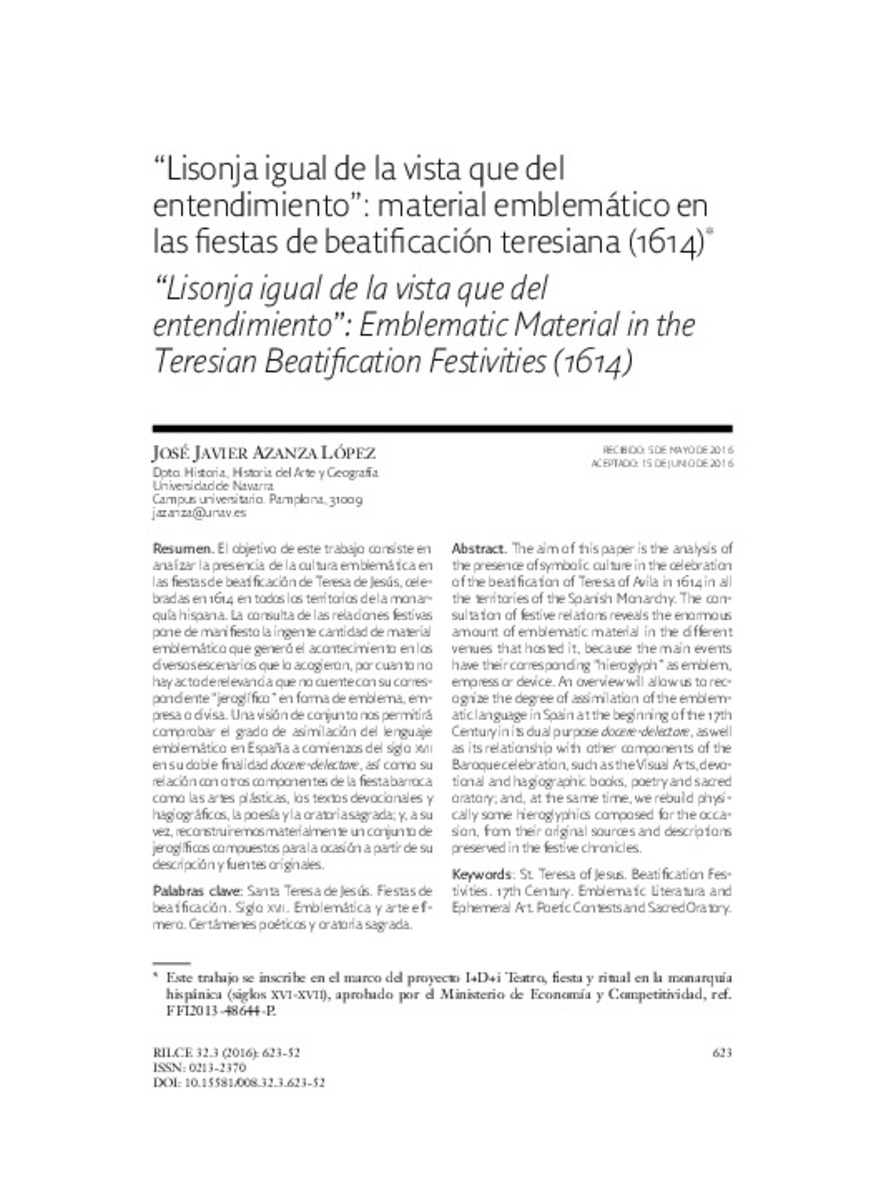“Lisonja igual de la vista que del entendimiento”: material emblemático en las fiestas de beatificación teresiana (1614)
Other Titles:
“Lisonja igual de la vista que del entendimiento”: Emblematic Material in the Teresian Beatification Festivities (1614)
Keywords:
Santa Teresa de Jesús
Fiestas de beatificación
Siglo XVII
Emblemática y arte efímero
Certámenes poéticos y oratoria sagrada
Publisher:
Servicio de Publicaciones de la Universidad de Navarra
Citation:
Azanza-López, J. J. (2016). “Lisonja igual de la vista que del entendimiento”: material emblemático en las fiestas de beatificación teresiana (1614). Rilce, Vol. 32, Nº 3, pp. 623-652
Statistics and impact
0 citas en

0 citas en

Items in Dadun are protected by copyright, with all rights reserved, unless otherwise indicated.








